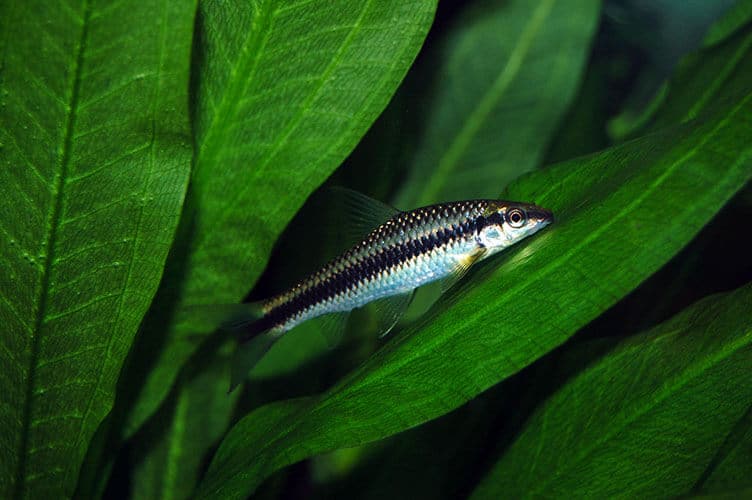There are simply so many species of freshwater fishes, which can make it overwhelming for beginner aquarium owners. Whether you’re specifically looking for an algae eater or an easy species to populate your tank, the Siamese algae eater could be for you.
This algae eater is an ideal choice for new hobbyists who would like to control algae in their freshwater aquarium. They don’t need much care and are extremely peaceful. Plus, you can keep them alone or with other species.
If you want to buy a Siamese algae eater, here is everything you will want to know about them!
| Category | Rating |
| Scientific Name: | Crossocheilus oblongus |
| Common Names: | Siamese algae eater |
| Care Level: | Easy |
| Temperament: | Calm and peaceful |
| Size: | Up to 6 inches |
| Color and Marking: | Brownish-beige with black or gold stripes |
| Life Expectancy: | Up to 10 years |
| Diet: | Omnivore |
| Family: | Cyprinidae |
| Minimum Tank Size: | Minimum 20 Gallons |
| Tank Setup: | Heavily planted tank (dense vegetation) |
Table of Contents
Species Overview
First, let’s take a brief overview of this species. Siamese algae eaters have the scientific name of Crossocheilus oblongus and are a freshwater fish species that is part of the Cyprinidae family. Native to Southeast Asia, they are actually related to carp too!
Despite their origins that are specific to Thailand and Malaysia, you can now find them bred anywhere around the world. Why are they so popular, you may ask? That is because this species is one of the most excellent and beginner-friendly algae eaters.
Moreover, their active behavior means they can clean the entire tank effectively. This is unlike most algae eaters who do not move around much, such as shrimps and snails.
Siamese algae eaters are easy and cheap to find. Ensuring your tank is mostly free from algae will never be easier with this fish. Still, they do produce waste, and having too many of them in your tank could make it dirty too.
Typical Behaviour
When choosing a new species to introduce in your freshwater aquarium, it’s always imperative to learn more about their typical behaviors. This time is no exception! The good news is that this species is rarely aggressive.
They also will not attack other fishes, which is always a good thing. But remember that they like swimming around quickly, which can be unsettling to species that tend to be calmer. We personally don’t think this would be a problem at all.
Furthermore, when housing several of them together, they may form a group and feed together. You will usually spot them on the bottom of an aquarium as they search for algae-covered areas. They may remain there until the algae are all eaten and finished.
Appearance
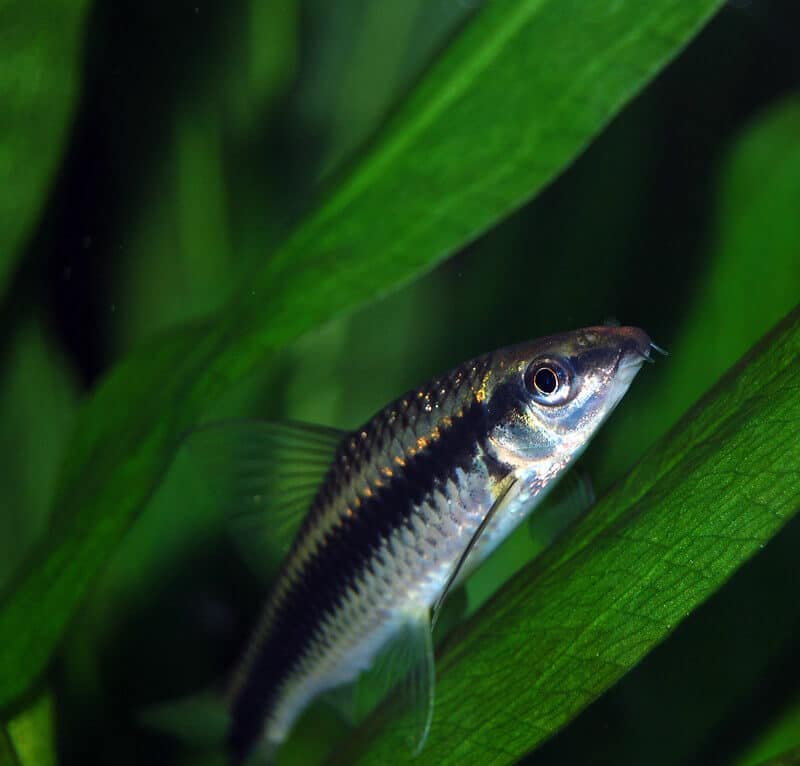
How can we describe their appearance? Long and narrow bodies in pale gold or grey. Of course, not to forget the distinctive black stripe covering the entire body head-to-tail. This runs all the way to the end of their fin, which also makes the Siamese algae eater easily identifiable
In the wild, you might notice that the stripe fades when the fish is trying to camouflage and hide from predators. This is less likely to happen in a safe tank environment. It can also fade when mating.
In comparison, the female counterpart usually has a broader middle section. Male fishes appear slim and sleek, as they don’t need to bear any eggs for breeding.
Another interesting detail that sets this species apart is its unique swim bladder. If they remain static for too long, they will sink deeper underwater. This explains why the species tend to move around constantly.
Typical Size
In terms of typical size, you will see that Siamese algae eaters can grow up to six inches in length. Males and females will be about the same size until they are 4 years old. From then, the female fishes can grow up to 30% more in size compared to males. Obviously, this helps us tell them apart easily!
Lifespan
You can expect this species to live for 10 years when given the correct and proper care. Even if you’re a new tank owner, this is not that hard to achieve. As long as your fish is healthy, they can adapt and take care of themselves without the need for extra supplements. Just make sure that you provide the ideal tank conditions and food!
Difference Between Siamese Algae Eater and Siamese Flying Fox
One of the most popular problems and confusions that arise regarding this algae eater is its similar appearance to the Siamese flying fox. Both have a striking black stripe along the body, but they are not the same!
So, how can you differentiate them? The easiest way is to look at the flaps in the mouth, which flying foxes have but not our Siamese algae eater. Of course, this could be tricky to determine when the fish are swimming around. That’s why checking their color is another great way.
On a Siamese flying fox, the black stripe is usually smooth and runs only up to where the tail begins. Meanwhile, an algae eater’s black stripe is more jagged and runs until the end of the tail. Quite straightforward, right?
How to Care for Siamese Algae Eater
We’ve said it today, and we’ll say it again: they are extremely easy to care for. However, this doesn’t mean that you can slack off and simply ignore them.
In terms of diseases, they are only prone to generic ones like the Ichthyophthirius multifiliis parasite. This could cause small white spots all over the body. Most diseases that can attack your Siamese algae eater can be treated easily.
But the best thing to do is prevent them from getting sick in the first place. For example, use high-quality foods and keep the water clean by changing them regularly. You should also ensure that any décor installed in the tank should be completely safe.
Tank and Environment Setup
With that said, let’s now discuss how you can emulate the natural habitat of a Siamese algae eater to help them live longer! The waters are slightly acidic and warm without having any fast current.
In the wilderness of Southeast Asia, they like living in rivers that are dense with plants and logs, which provide plenty of shelters. These shelters are crucial because they prefer familiar spaces than exploring new spots.
If you can set up a tank that best mimics this natural habitat, then you’re all good. Your fishes will be as happy as can be!
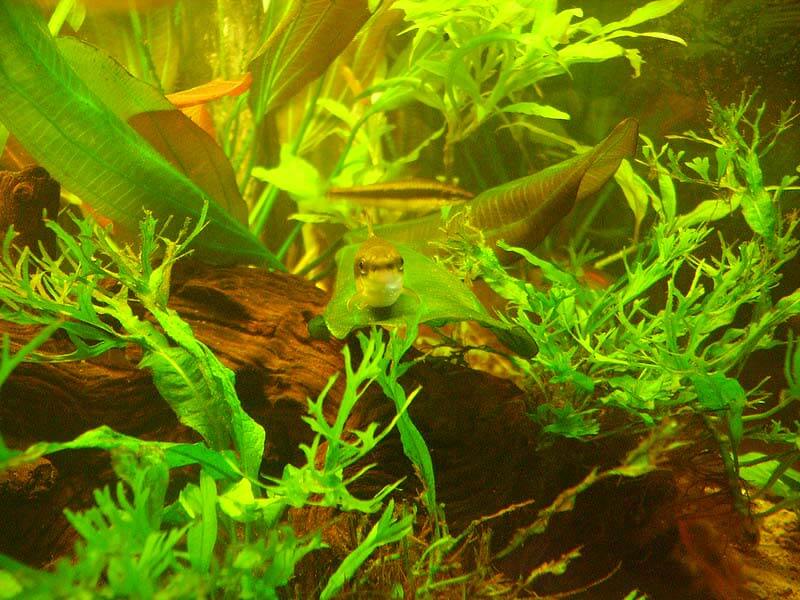
Aquarium Size
Considering that the adult fishes will measure around 5-6 inches, you should ensure that the tank size is enough for them. The bare minimum would be a 20-gallon tank for one fish. If you want to keep two or three Siamese algae eaters, then you should add an additional 10 gallons per fish.
This should also increase with more fish species too. Don’t forget to learn about the other species that you have and their tank size requirements. After all, you would want each of them to live happily and comfortably.
Tank Conditions
A sandy substrate with lots of plants will be perfect. This is because they enjoy swimming near the bottom and feeling safe around the shelters. Not to mention that plants can ensure the water is well-oxygenated too. You may even consider creating caves!
When you keep multiple of these fish in a tank, they may find that there’s not enough food. This could cause them to nibble on the plants, so take care to keep them well fed. Another thing to note is that they are an energetic species and can jump from the water. Put a lid on your tank to prevent any unwanted situations.
In terms of water conditions, Siamese algae eaters thrive in a warm and tropical environment. Keep the temperature between 75 and 79°F, 5 and 20 dH for the hardness, as well as 6.5 and 7.0 pH. Although they can tolerate a wider range of pH, between 6.0-8.0. There’s no need to create fast-moving currents either.
Siamese Algae Eater Food and Diet
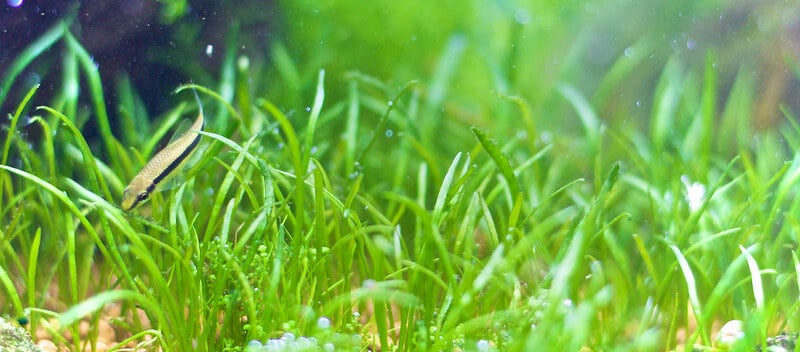
Just as their name suggests, the bulk of their diet is made up of algae. These scavengers can feed on anything from algae and plant matters to dead fish and insects. It’s why they are so easy to keep and care for!
Siamese algae eaters aren’t fussy at all and will eat almost anything you give them. When there are not enough algae, supplement with flakes, algae wafers, or pellets. Live foods are even better and will help sustain them too. Try providing some brine shrimp or bloodworms – alive or frozen shouldn’t matter.
On the downside, overfeeding may pose a problem! These fishes may have already fed on the plants and algae when you give them other foods. They can go on eating all day if possible, so limit the food amounts carefully.
Best Tank Mates
Perhaps the most appealing thing about Siamese algae eaters is their peaceful nature. This lets you house them with more species without any conflict and makes them perfect for a community aquarium.
The only thing to pay attention to is their fellow bottom-dwellers. Other species like red tail sharks are quite territorial and would not be so kind to your algae eaters. Meanwhile, others like Corydoras are also peaceful and co-exist well with them.
You should not keep them with fishes that are notorious for their aggression either. This includes Chidis, even though they live in the upper areas of the tank.
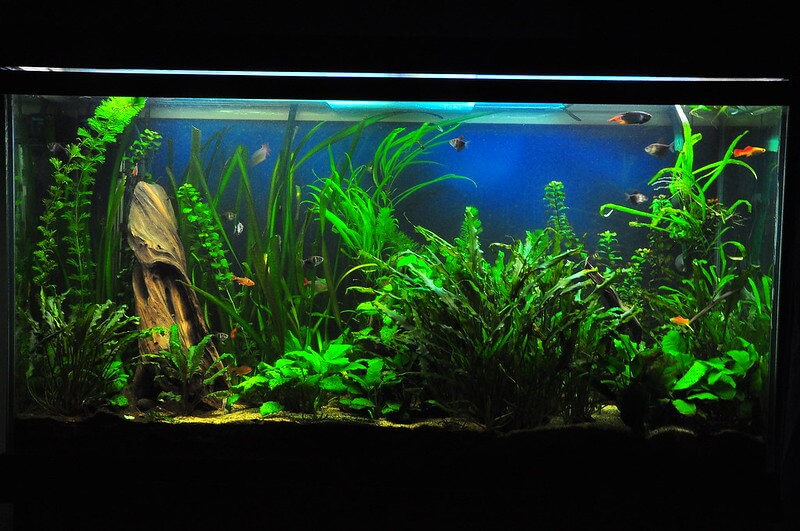
Smaller species such as Neon tetras and guppies would be perfect tank mates too. This doesn’t mean you cannot house them with larger fish! Gouramis and barbs are peaceful, so they would live well with a Siamese algae eater.
Non-fish species are welcome, whether they’re shrimps or snails. Algae-eating species like cherry shrimps and nerite snails will help manage algae in the tank. Moreover, they will add variety to make your aquarium more bio-diverse and lively! Just make sure not to overpopulate and adjust the size accordingly.
How To Breed Them?
While Siamese algae eaters are easy to care for and feed, breeding them is another story. It’s highly unlikely that individual tank owners can breed them, as most of them breed exclusively in specialized farms with hormonal interventions.
Part of the reason is because the mature females are much larger than males. Changing water conditions like the temperature or pH could be a trigger. But no one actually knows how to breed these fishes in a home aquarium.
Should You Get Siamese Algae Eaters?
And so the most fundamental question remains. Should you get a Siamese algae eater for your freshwater tank? Whether you are experienced or a total beginner, it should be fairly easy and straightforward to keep them.
They’re very peaceful and relatively adaptable, so they can thrive in a community tank too. More importantly, they will get rid of any algae to keep your aquarium looking clean and neat. Not to mention that their active tendencies will create movements within for a livelier environment.
Do your best to comply with the tank requirements and food supplements that we’ve mentioned, which aren’t much or difficult at all. This way, you will keep your fish happy and healthy to live a long, fulfilling life!
Final Verdict
When all is said and done, Siamese algae eaters can probably fit in and survive in whatever tank you have in mind. As long as the water conditions are tolerable and there are no notoriously aggressive tank mates, these fishes will thrive.
They are easy to find in any pet shop, affordable, and easy to care. For most hobbyists, they are the obvious final element to tie up a healthy tank ecosystem. Perfect for beginners and experts alike, there is a reason why these algae eaters are beloved and popular. Good luck!

